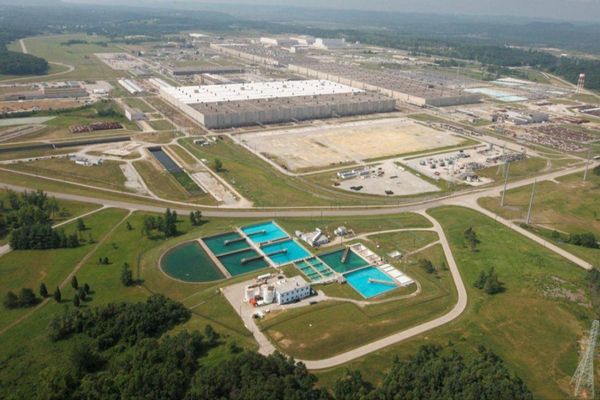
After multiple days of deliberation and analysis, NASCAR issued a precedent-setting decision to penalize Austin Dillon for the controversial moves leading to his Richmond win. Dillon gets to keep the victory—trophy, money, and everything—but his automatic playoff berth has been revoked. Plus, both Dillon and the Richard Childress Racing team have been docked 25 points. NASCAR's decision—one that , in some ways, sits at the existential crux of the Cup series choices to be a "racing series or a wrecking series"—was reached based on deeply parsing data, footage, and rules to arrive at a weighty decision. Data that shows not only Dillon's actions, but his intent.
An immense amount of video footage and opinions emerged after the race finish on Sunday, but in order to fully understand what happened, NASCAR needed to see the SportsMedia Technology (SMT) data stream. SMT data is an array of telemetry captured from the cars showing info like steering angle and throttle percentage, along with a handful of other variables. It's available internally to NASCAR competitors (but not the public, and was shared with me by a source). Which means we can analyze the same data that NASCAR officials looked at for Dillon's last two laps, including that crash-filled final run to the finish line.
There have been a lot of opinions on the moves by Austin Dillon on the last lap but best way to analyze them is to look at the actual data so let's dig into his last two laps in a quick thread.
— Bozi Tatarevic (@BoziTatarevic) August 12, 2024
Orange = Lap 407
Blue = Lap 408 pic.twitter.com/t104uOyX7L
In the SMT footage, Dillon's lap 407 is shown in orange, while lap 408—the race's final lap—is shown in blue. Immediately you see that Dillon followed the bottom of the track on lap 407, but ended up in the middle of the track on that last lap.

In this first image we can see the moment of impact where Dillon hits Joey Logano and sends him spinning. Notice immediately that Dillon is higher up on track than he was on the ghost image of his previous lap, along with utilizing more throttle at 21% versus the previous lap at 11%. This indicates that Dillon was likely more focused on driving into the back of Logano’s car than actually attempting to make the corner. If he had not been able to hit Logano, his momentum would have likely sent him up the track and resulted in him failing to make the corner.
In the video above, crew chiefs Todd Gordon and Travis Peterson analyze these moves, employing overhead footage to show the yaw angle difference of the two cars and are able to see exactly where Dillon was pointed up the track while Logano was attempting to make the corner.

As Dillon sends Logano spinning into the wall, Denny Hamlin is positioned at the bottom of the track just behind the two cars—attempting to beat Dillon to the finish line. Hamlin follows the same bottom line that Dillon used on the previous lap, while Dillon, now in the middle of the track, tries to find the shortest path to the finish line.

Hamlin eventually goes even lower, likely in an attempt to avoid contact with Dillon and looking for an opening to get to the finish line more quickly. Dillon is on the throttle attempting to recover some of the speed he lost in impact with Logano.

The key moment in the SMT data is found just prior to when Dillon impacts the right rear of Hamlin’s car. If we look at the steering traces, we can see that Dillon has his steering wheel turned 33.9 degrees to the left, while on the previous lap in the same place he had it turned 3.7 degrees to the right. This indicates that he had turned his steering wheel towards Hamlin’s car. The throttle sensor data also shows that it is pushed wide open as he aims his car into Hamlin’s.
While SMT data is fairly reliable, it can’t be used as a solitary source, so NASCAR officials examined additional video angles. One of those angles was shared in the Gordon and Peterson video, showing a view towards the front end of Dillon and Hamlin as they tangled. From that shot, we learn Hamlin experienced some oversteer that caused the rear of his car to slide up the track—but the more important information is visible through the windshield of Dillon’s No. 3 car. Just prior to the impact, you can see his white gloves turning the wheel left, corroborating the steering data from SMT, and effectively proving that Dillon intentionally turned left into Hamlin's No. 11 car.
This clip from later on in that video is also very helpful to show Hamlin getting a bit loose and also give us a glimpse of Dillon's glove which appear to be moving left just as he reaches Hamlin. pic.twitter.com/LPm3gZTby1
— Bozi Tatarevic (@BoziTatarevic) August 13, 2024
NASCAR likely examined additional data sources, like the car’s crash data recorder, to have more points of correlation, which would have taken time to analyze. With the data in hand, NASCAR then turned to the rule book to determine the right penalty for Dillon's actions. They started with sections B and D under rule 4.4, which allowed them to deduct points based on the NASCAR code of conduct and a competitor taking actions that are detrimental to stock car racing.
Additionally, NASCAR enforced rule 10.1A which expands on the mechanism for ruling on actions detrimental to stock car racing—as well as rule 12.3.2.1B, which lists one of the requirements for playoff eligibility, and states that “Race finishes must be unencumbered by violation(s) of the NASCAR Rules or other action(s) detrimental to stock car auto racing or NASCAR as determined in the sole discretion of NASCAR.”
NASCAR does not have a specific mechanism in the rulebook to strip a driver of a win in a situation like this, but these playoff eligibility rules allowed them to revoke Dillon's playoff berth due the violations previously listed. While NASCAR traditionally lets drivers police themselves when it comes to in-race interactions, Sunday’s events required the series to draw a hard line in the sand between what's acceptable and what's not when it comes to treating competitors like bumper cars in the battle for a win—setting a precedent for future incidents.







